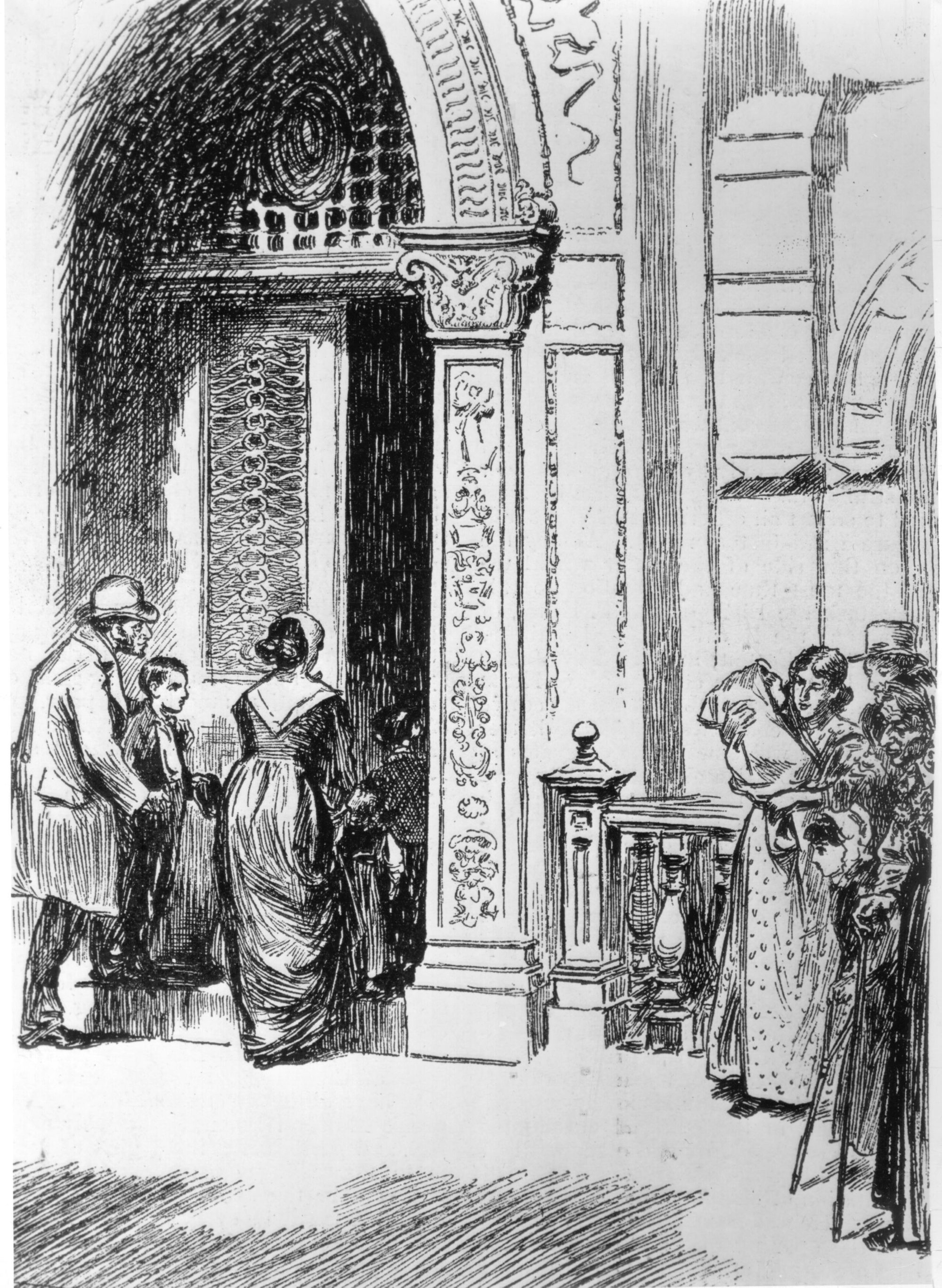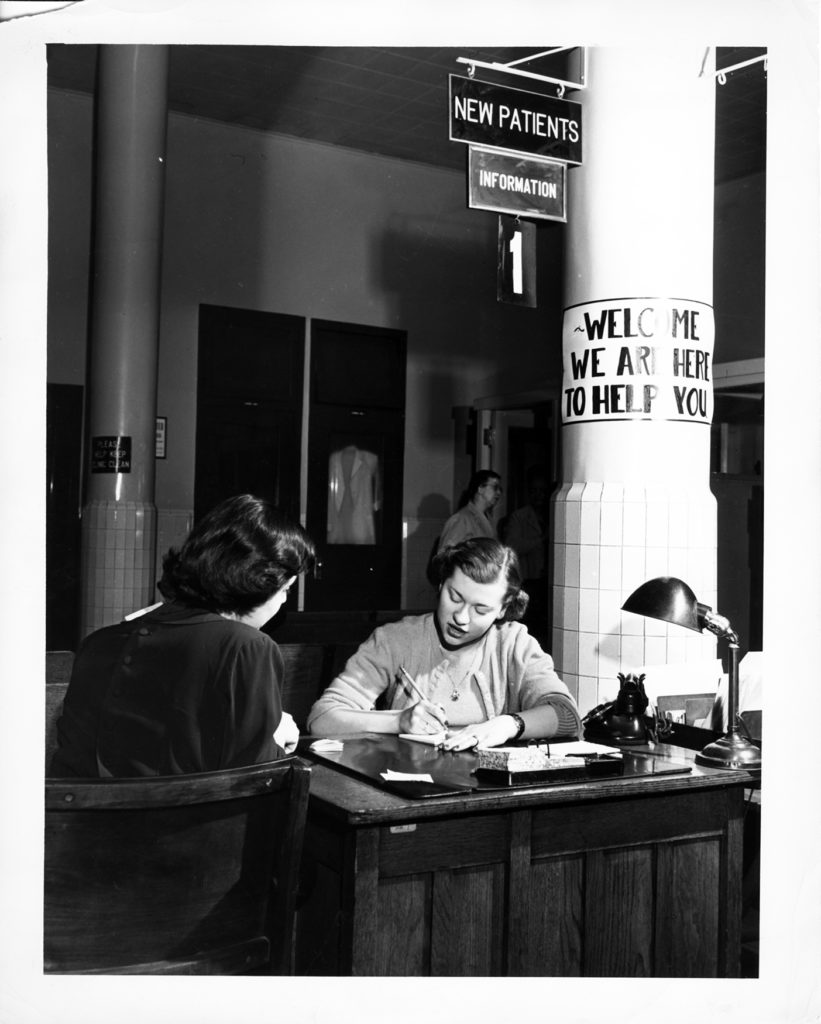The Mount Sinai Hospital created its Dispensary/Out Patient Department in 1875 when it established four clinics: the Gynecology Clinic, the Children’s Clinic, as well as ones for Medicine and Surgery. Then as now, these clinics were designed to treat people with health needs that did not require a hospital stay. The Hospital traditionally had a long waiting list for admission, and this was seen as a way to help those they could before their conditions worsened. (In addition, in 1884, Mount Sinai Hospital created what it called the “Outdoor Visiting Physicians” to actually go to people’s homes to care for them there. Medicines were provided from the Hospital pharmacy.)
The Hospital was a charity organization and highly dependent on keeping costs down and maximizing donations to support its work. While there were a few patients willing and able to pay something for their care, the vast majority were treated free of charge both on the in-patient side as well as in the Dispensary. Since funds were so limited, Mount Sinai tried to take steps to ensure that their efforts were helping those most in need. One of those steps was to post a sign in the Dispensary that said, “Poor People Only Treated Here”. It eventually became clear that this sign was disrespectful to the people who used the clinic, and 140 years ago, on May 8, 1881, the Board of Directors of the Hospital decided to look into having the sign removed. Unfortunately, the Board minutes do not tell us if it was actually taken down.
The need to closely watch expenditures and try to reserve their services for the most needy continued to plague the Hospital leaders for decades. The beginnings of health insurance in the early decades of the 20th century helped, but it was really the implementation of Medicare and Medicaid in the mid-1960s that relieved hospitals of much of the burden of the costs of charity care.

The entrance to the MSH Dispensary, 1890

The Mount Sinai Hospital OPD Admissions desk in 1951
